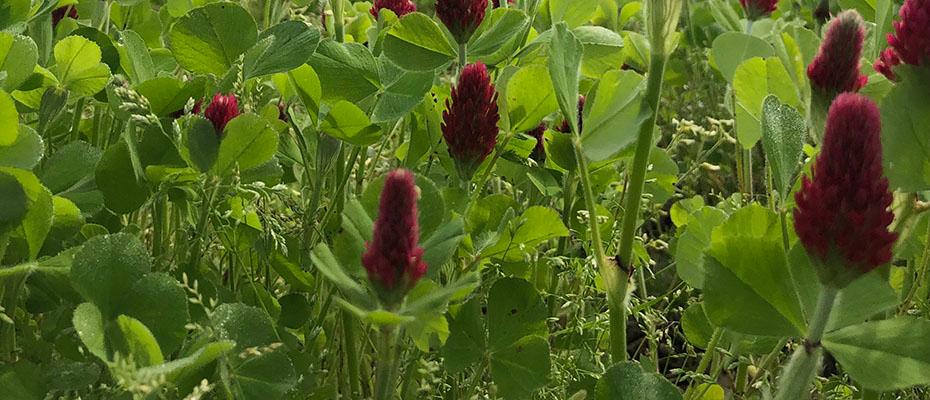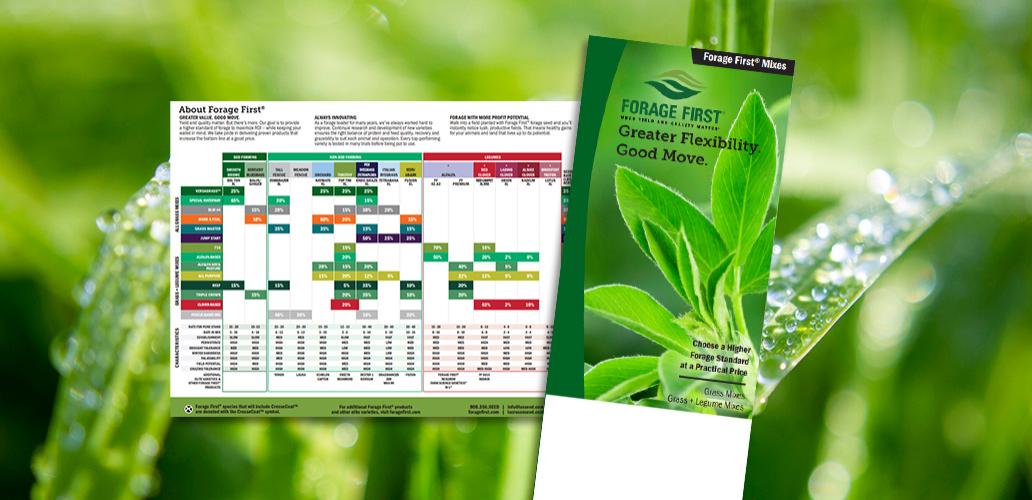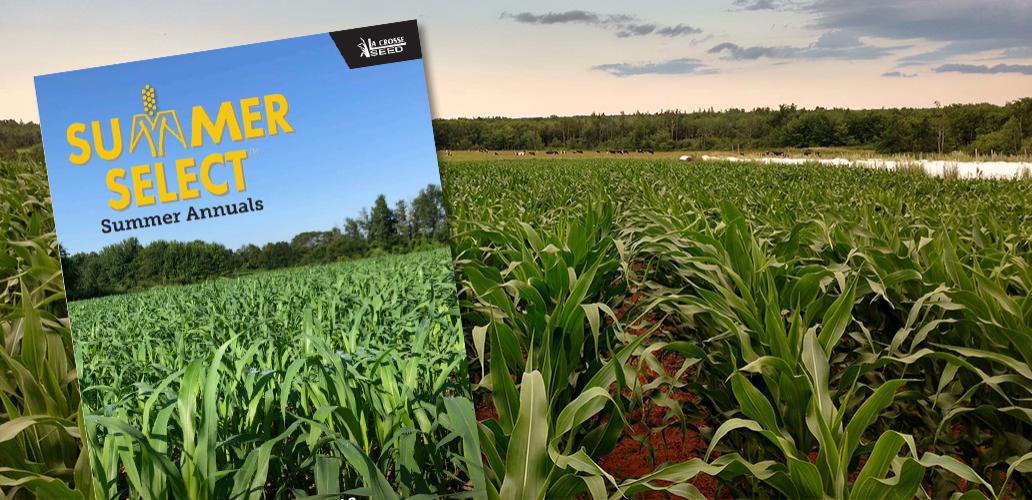Forage First Guide I Summer Select Guide
Greater Value. Good Move. Yield and quality matter. But there’s more. Our goal is to provide a higher standard for forage to maximize ROI– while keeping your wallet in mind. We take pride in delivering proven products that increase the bottom line at a good price.

Crimson Clover cover crop legume is a semi-upright winter annual legume that germinates quickly and prefers well drained soil. Crimson Clover legume tends to remain actively growing in cooler temperatures when warmer season clovers go dormant. Crimson clover legume can be successfully established in both fall and spring. To maximize success in late summer plantings, seed at least 6-8 weeks before frost. Spring plantings should occur after all danger of frost has past.
CHARACTERISTICS:
Non-Forage Benefits:
1 = Poor; 5 = Excellent
Compaction Alleviation: 2
Weed Suppression: 4
Biomass Production: 3
Erosion Control: 3
Disease/Pest Control: 3
Pollinator/Beneficials: 3
P & K Cycling: 3
Ease of Establishment: 4
Nitrogen Fixer/Scavenger: Fixer
Nutritional Value:
Values Vary Greatly Depending on Maturity
Crude Protein: 17
NEL¹ Mcal/lb.: .56
ADF%²: 31
NDF%³: 42
TDN: 59
DM Tons/Acre: .5-2
Days to First Harvest: 60
Days to Next Harvest: –
¹- Net Energy for Lactation = Energy available after subtracting digestive and metabolic losses
²- Acid Detergent Fiber = Low values mean more digestible
³- Neutral Detergent Fiber = Low values mean cows can eat more
Ranking (Good, Better, Best):
Graze: Better
Baleage: Best
Chop: Good
SEEDING:
Planting Time:
Feb.-Mar.;Aug.-Sept.
Seeding Rate:
Mono (lbs./acre): 10-15
Mix (lbs./acre): 4-8
Forage (lbs./acre): 6-15
Seeding Info:
Carbon/Nitrogen Ratio (C:N): 15:1-20:1
Seeding Depth (in./with drill): 1/4
Seeds/lb.: 150,000
Bulk Density (lbs./ft.³): 52
Aerial Application Rate: 6-15
Germination Soil Temp.: 42 F
USDA Hardiness Zone: 7
Days to Emergence: 7-10
MANAGEMENT:
Considerations
- Heavy stands may attract voles and other pests
- Crimson clover can cause bloat (see Soil First® Management Guide page 15 for more information)
- Ideal pH of 5.5–7.0
- Strong nitrogen fixing and high biomass potential –N production will be greatest when termination occurs at or after bud stage
- Really good shade tolerance –suitable for interseeding plantings in grass cash crops
- Good option for hay or grazing
- Increases water- holding ability and flowering stands attract many beneficial insects and pollinators
- Suited for many cropping systems across the country, from potatoes to corn to wheat to cotton
- Hardy to USDA Zone 7 (0–5° F)

.png)
.png)


.png)











